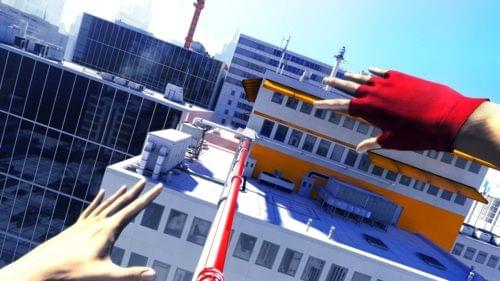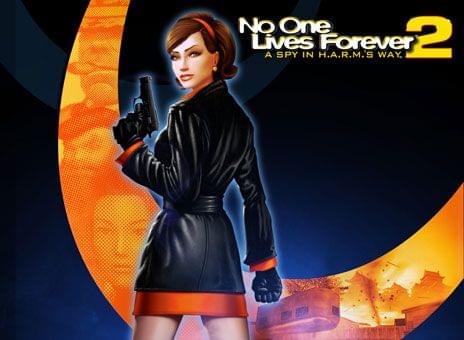Portal and Mirror’s Edge were both games that I wanted to like and play, but for some reason I just put them off until I got Portal for free when Steam launched on Mac and I bought Mirror’s Edge about a year ago for some ridiculously low amount of money. They both wanted to show something new and exciting.

To make that “new stuff” point as clear as possible, the main characters are neither MIT doctorates nor super soldiers. Both games1 feature a normal2 woman main character. Both Mirror’s Edge’s Faith and Portal’s Chell end up strong and making their own decisions and so forth. So far, normal 21st century independent woman stuff, but the stories themselves are not. In most male-lead first person shooters, the story doesn’t make the main characters victims of circumstances. Or if they are, they need to safe the whole goddamn world or universe, not just themselves or their family. Yes, in both Portal and Mirror’s Edge it can be understood that there’s a grand conspiracy somewhere there and you do play a role in fighting against it, but it’s not at the usual “let’s save the universe!” level of motivation.
As such, this is somewhat similar to Jade in Beyond Good & Evil. It’s also notable that instead of guns, Jade’s arsenal is a stick and a camera. Consider what if in Half-Life, the only weapon Gordon Freeman had was just his trusty crowbar? In this respect, it seems that MacGyver would make a really bad game lead character.
The only games featuring female leads who have decidedly in harm’s way are Cate Archer from No One Lives Forever, Samus Aran3 from Metroid series and Commander Shepard from Mass Effect. It is also notable that these characters were on a self-chosen missions to save the world/universe, not just themselves or their loved ones. Of course, being spies, soldiers and mercenaries that is pretty much their job description.
However, in Mass Effect’s and Metroid’s case, the characters are rather ambiguous in regards to gender. In Metroid, it wasn’t until well into development that it occurred that they could make the player character female. In Mass Effect, the player chooses Shepard’s gender and in all advertising, a male version is shown. Even in NOLF, the main character was first called Adam Archer. So, in strict sense, none of the above games were actually designed around a female lead. I find it rather sad that the only way a female lead has an assault rifle in her hands is if at the beginning it was thought that she was a he.
And to top that off, in No One Lives Forever Archer has to prove herself as the first female spy of UNITY - something her previous incarnation as Adam definitely would not have needed to do. Of course, this can be accepted as the game is set in 1960s. But, as far as female leads go, the game industry seems to be well set in the same period4.

Anyway, focusing on the gender of the female lead doesn’t really do justice to Portal nor Mirror’s Edge. They are very interesting games and both have by now a nice cult following. Portal might be a bit over-hyped, but it’s an interesting reminder in how to progress narrative without resorting to cut-scenes. I find it a bit dull that Portal is put into the puzzle genre bin solely because the player’s character doesn’t wield a lethal weapon - the physics “puzzles” are not that different from what Half-Life 2 had (except, naturally, that you can’t shoot back and there are portals). However, while both games were critically acclaimed, neither was a commercial success. In itself that was not a problem for either game, but might hinder chances to see more female leads in games5. I hope to be proven wrong.
This year will see the sequel to Portal and as far as we know, development will continue with Beyond Good & Evil until it’s perfect. Both EA and DICE have not out-ruled a sequel to Mirror’s Edge, but I doubt it will materialize. I don’t think that the game would really benefit from a sequel, and in that case there’s a a lot DICE would need to improve on. However, I’m quite sure that they’re looking at something in the spirit of the original game.
As I said earlier, I really wanted to like Mirror’s Edge, but I abandoned playing it a while ago. I did however play through the iPhone version of it. On iPhone, the game is a pure 2D platformer and is much more straightforward and shorter. It was rather enjoyable and it might have convinced me to try the original Mirror’s Edge again. I like the idea of free-running and I think what the main version missed was just some polish - and the Time Trial mode should have been there from the beginning, because Mirror’s Edge’s world just screams for exploration.